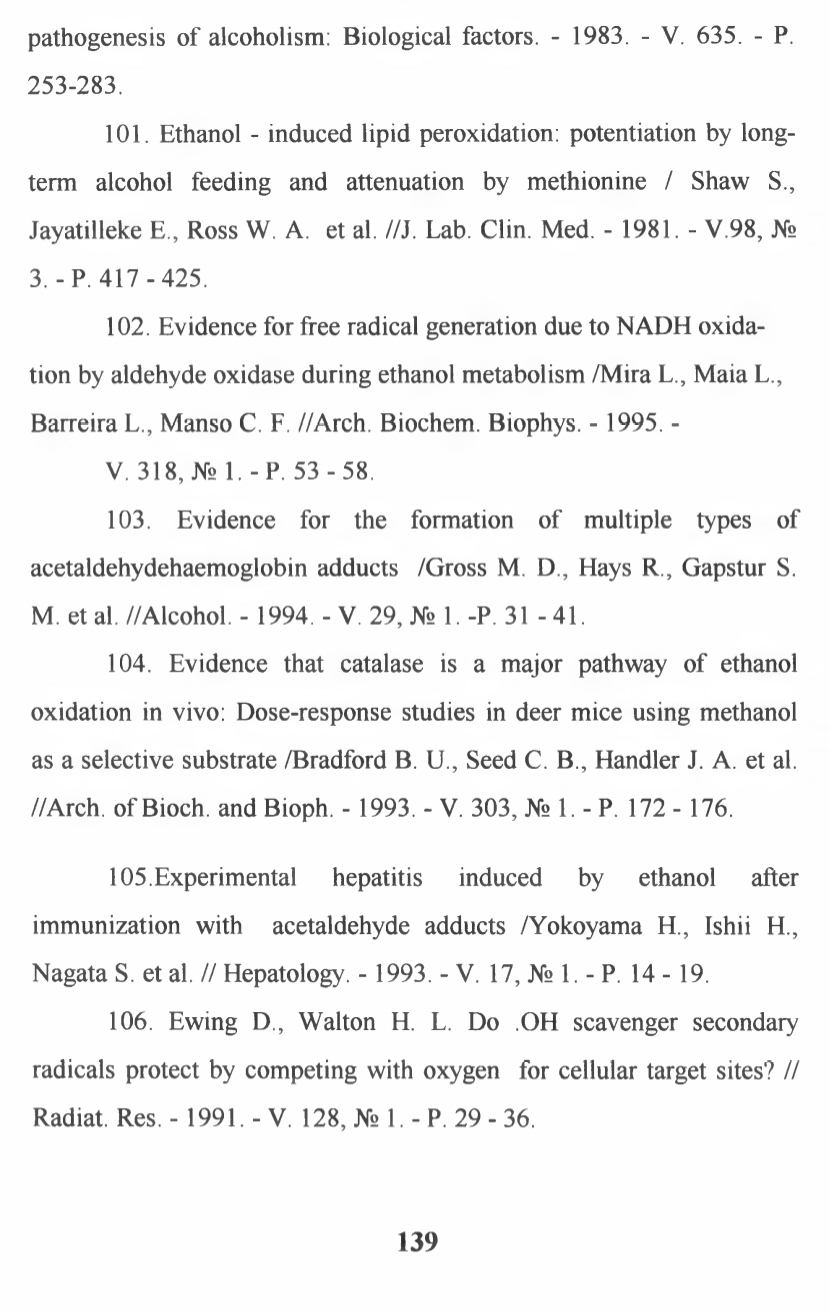
pathogenesis of alcoholism: Biological factors. - 1983. - V. 635. - P.
253-283.
101. Ethanol - induced lipid peroxidation: potentiation by long
term alcohol feeding and attenuation by methionine / Shaw S.,
Jayatilleke E., Ross W. A. et al. //J. Lab. Clin. Med. - 1981. - V.98, №
3 . -P. 417-425.
102. Evidence for free radical generation due to NADH oxida
tion by aldehyde oxidase during ethanol metabolism /Mira L., Maia L.,
Barreira L., Manso C. F. //Arch. Biochem. Biophys. - 1995. -
V. 318, № 1 , - P. 53 -58.
103. Evidence for the formation of multiple types of
acetaldehydehaemoglobin adducts /Gross M. D., Hays R., Gapstur S.
M. et al. //Alcohol. - 1994. - V. 29, № 1. -P. 31-41.
104. Evidence that catalase is a major pathway of ethanol
oxidation in vivo: Dose-response studies in deer mice using methanol
as a selective substrate /Bradford B. U., Seed С. B., Handler J. A. et al.
//Arch, of Bioch. and Bioph. - 1993. - V. 303, № 1. - P. 172 - 176.
105.Experimental hepatitis induced by ethanol after
immunization with acetaldehyde adducts /Yokoyama H., Ishii H.,
Nagata S. et al. // Hepatology. - 1993. - V. 17, № 1. - P. 14 -19.
106.
Ewing D., Walton H. L. Do .OH scavenger
radicals protect by competing with oxygen for cellular target sites? //
Radiat. Res. -1991. - V. 128, № 1. -
p.
29 - 36.
139


